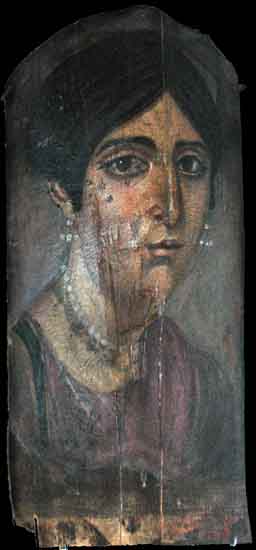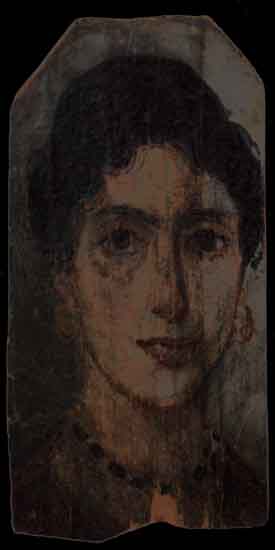|
 |
|
Portrait
of a women, painted in wax on wooden panels from Hawara and dating
to the Mid-2nd century AD. Manchester Museum.
These portraits can he dated from the details of the painting technique, hairstyles, clothes, and in the case of the women, the jewellery. In the 2nd century AD, two necklaces were usually worn: a gold chain, and a string with roost precious stones. In all the portraits, women also wear earrings. The people depicted in these portraits represent Greeks, Egyptians and those of other Mediterranean origin. They occurred in the Faiyum at a period when there was a large, prosperous population of immigrants who included veteran soldiers and those engaged in commerce. These portraits were probably painted by itinerant artists living in the Faiyum. The panel, made up of cypress, lime or sycamore wood, was prepared with a ground of gypsum plaster or plaster of whiting and glue. The portrait was roughly sketched on this in black or red paint. The paint, mad' from natural mineral or vegetable pigments, wax then applied. As a medium for the paint, either water and an adhesive material were used or, more often, the pigment was ground and mixed with wax. Some sources suggest that these portraits were pre-mortem and would have occupied a place in the person house. Although the time of the painting may be true, there is a certain melancholy about the pictures that suggests that these were not for daily viewing.
|
 |
